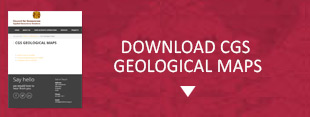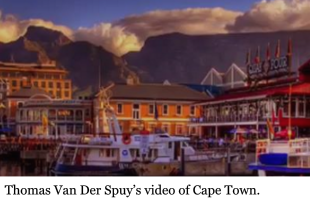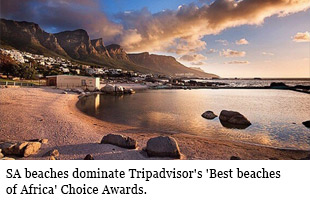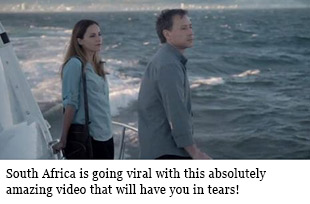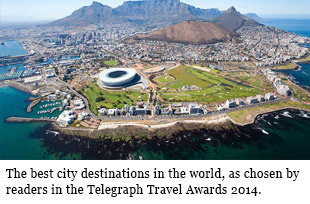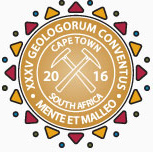
35TH INTERNATIONAL GEOLOGICAL CONGRESS
27 AUGUST - 4 SEPTEMBER 2016 | CAPE TOWN, SOUTH AFRICA
Sponsors



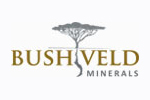


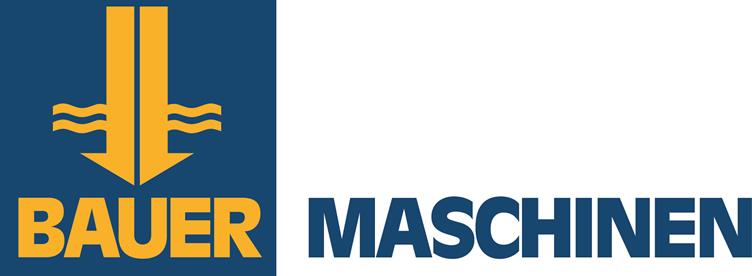










35 IGC SAGPGF





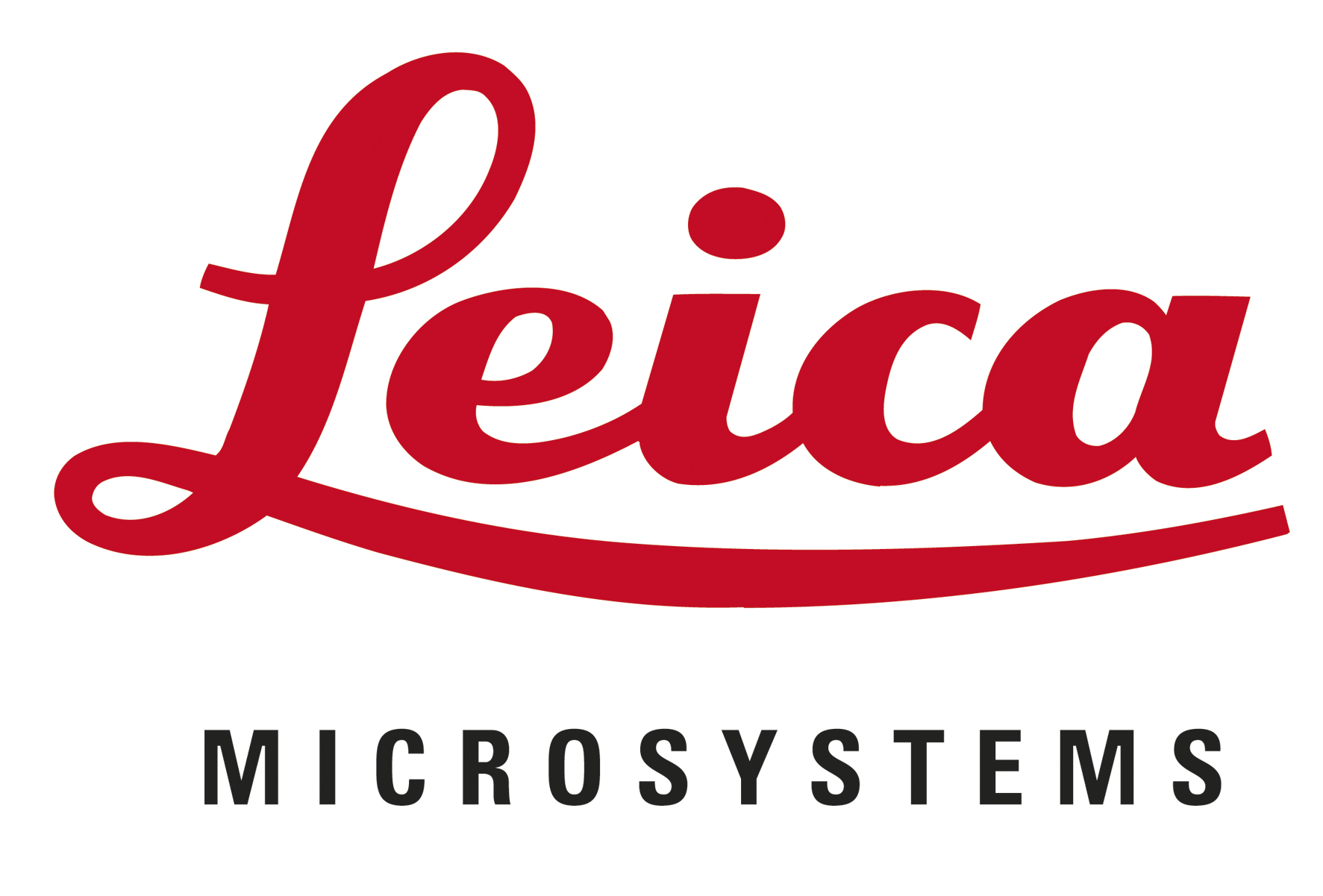
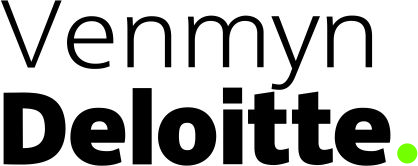
35TH INTERNATIONAL GEOLOGICAL CONGRESS
27 AUGUST - 4 SEPTEMBER 2016 | CAPE TOWN, SOUTH AFRICA
My IGC
ODPre9 / ODPre10 / ODPost2 Table Mountain hike; Maclears Beacon-Platteklip Gorge cable car
The 35th International Geological Congress meeting was held in Cape Town, South Africa from the 27 August to 4 September 2016. Throughout the conference participants were enthralled by the culture, tradition, on-going transformation and magnificent scenery defined by Cape Town. The Cape Town city centre is often referred to as the “City Bowl District - CBD”, which stems from the fact that the city is almost entirely surrounded by mountains. These mountains are also vegetated by the world famous “Fynbos – Fine bush” flora. The Fynbos is especially important, because it comprises 20 % of the total endemic African plant species, despite being concentrated in a relatively small geographical region. The CBD is open toward the north by the Table Bay, which together with the mountains and flora further accentuates the beauty of this region.
Of the mountains that make up the “bowl” surrounding Cape Town, Table Mountain is by far the most famous. This table-shaped mountain reaches just over 1,000 m above sea-level and serves as an ever-present Colossus watching over Cape Town. The table-top appearance is due to the mountain being largely comprised of weather-resistant quartzites that are almost entirely flat-lying. In addition, Table Mountain has also been voted as one of the Seven Natural Wonders of the World. With this in mind, no geological congress meeting in Cape Town is complete without a natural tour of this majestic Mountain.
To maximise the opportunity for IGC participants to experience Table Mountain three hiking trips were organised; prior to and after the IGC meeting. This allowed for 30 participants from 12 different countries to join the various trips and experience the best of what Table Mountain has to offer. The trip was led by Taufeeq Dhansay, assisted by Sisanda Makubalo and Haajierah Mosavel, all from the Council for Geoscience.
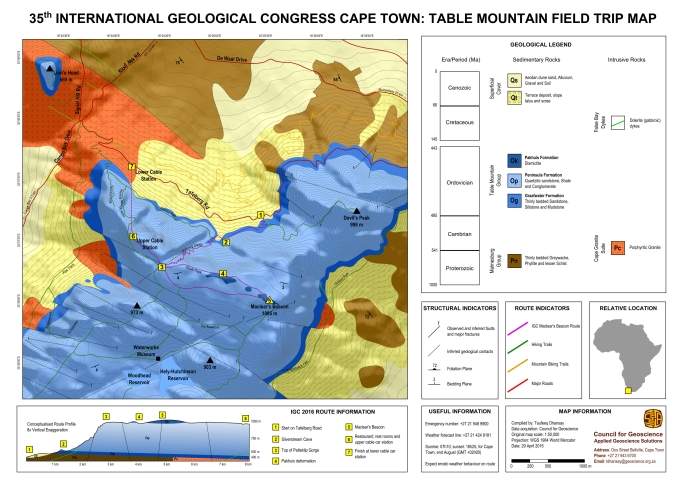 Special edition 35th IGC Table Mountain field trip geological map (download high-resolution: click here)
Special edition 35th IGC Table Mountain field trip geological map (download high-resolution: click here) The participants departed the CTICC and made their way to the start of the hike on the lower slopes of Table Mountain. The starting point provided an ideal vantage point to overlook most of the Cape Town geology. Cape Town is largely underlain by Neoproterozoic Malmesbury Group phyllite and schist. These were intruded by Cambrian Peninsula Granite, which is seen spectacularly at the ‘Sea Point Contact”. After a regional hiatus and erosive period, the Table Mountain Group of mostly siliciclastic rocks were deposited during the Ordovician.
After this brief geological overview, the hike commence through the lush Fynbos vegetation that defines these lower mountainous slopes. For this first part of the hike the geology simply comprised boulders of fine-grained sandstone and quartzite making up the Graafwater and Peninsula Formations.
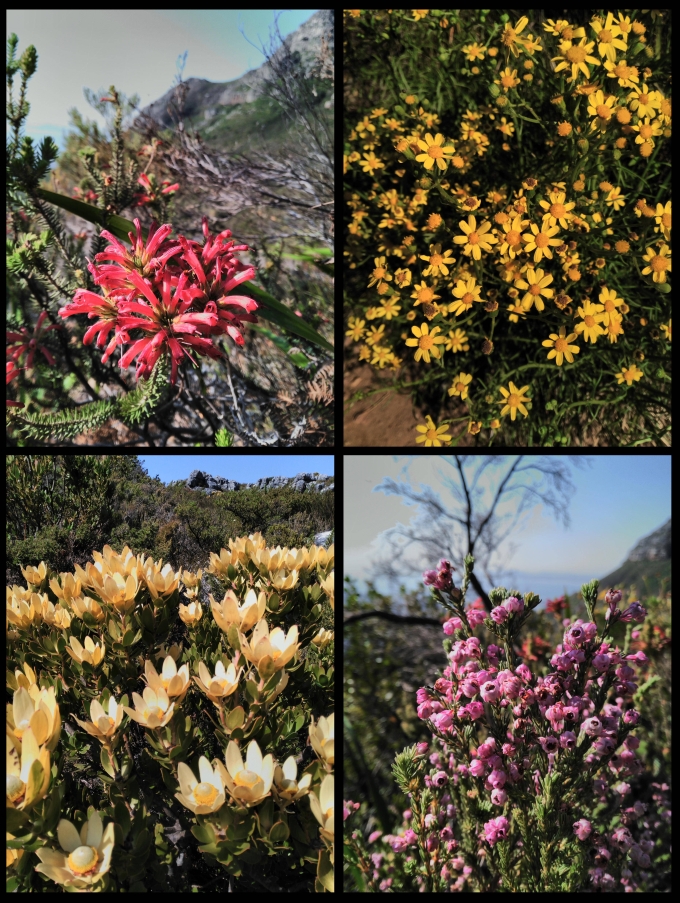 Some of the Fynbos encountered along the hike (TL: Erica Abietina; TR: Yellow Daisy; BL: Golden Conebush Protea; BR: Erica Baccans)
Some of the Fynbos encountered along the hike (TL: Erica Abietina; TR: Yellow Daisy; BL: Golden Conebush Protea; BR: Erica Baccans) The first official stop was within the Silverstream Cave. This cave is situated along the unconformity between the lower-lying Graafwater and overlying Peninsula formations and was formed due to the less-resistant Graafwater rocks weathering preferentially over the harder and more competent Peninsula quartzites. The Graafwater Formation is considered a tidal flat depositional sequence and displays several key features related to this type of environment. In the Silverstream cave, lingoidal and longitudinal ripple marks with numerous cross bedding features and trilobite tracks are especially prominent.
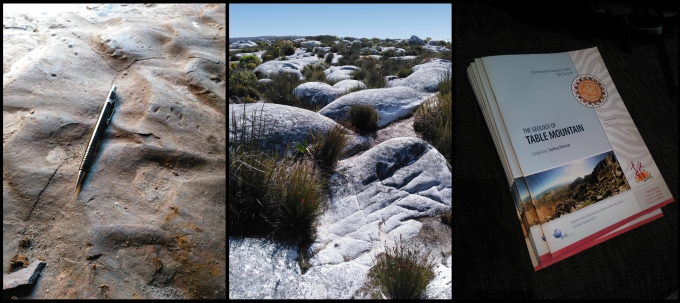 L: Trilobite trackways on lingoidal ripple marks in the Graafwater Formation; C: Humpback outcrop pattern of the Pakhuis Formation; R: Table Mountain field guide book
L: Trilobite trackways on lingoidal ripple marks in the Graafwater Formation; C: Humpback outcrop pattern of the Pakhuis Formation; R: Table Mountain field guide book After departing the shaded cavernous refuge, the groups began the true ascent up Table Mountain along the Platteklip Gorge trail. This gorge was formed along a large NE-SW fracture and now boasts a popular route that slowly snakes its way up the mountain. The first two trips had lovely weather with clear skies and only a light fog across the Table Bay, however, the final trip gave the participants an opportunity of hiking into the “Table Cloth”. This Table Cloth often forms atop Table Mountain as fresh SE winds rises rapidly up the mountain and quickly condenses due to the temperature decrease associated with the altitude gain. This provides a marvellous sight from below, however creates treacherous hiking conditions. During the final trip, temperatures in the city were well above 25° C, however, within the Table Cloth tempest, it was well below 10° C.
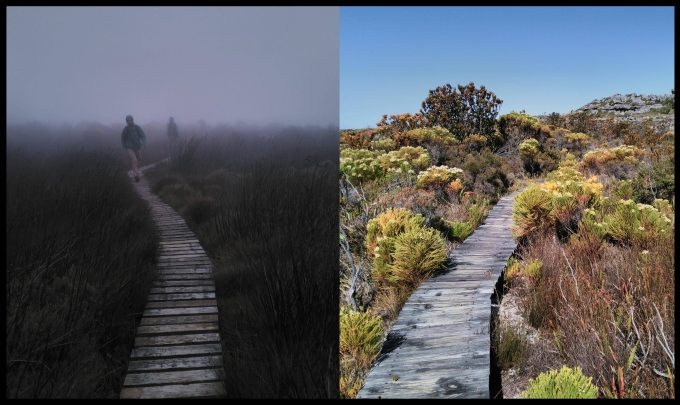 L: Conditions within the “Table Cloth” on the final trip (insert imagination with gale-force winds); R: Conditions with no “Table Cloth” on the first trip
L: Conditions within the “Table Cloth” on the final trip (insert imagination with gale-force winds); R: Conditions with no “Table Cloth” on the first trip Platteklip Gorge winds up approximately 550 m through a continuous sequence of Peninsula quartzites, which were deposited by a braided fluvial environment. This section is particularly strenuous, but becomes easier near the top where the gorge narrows and more shade and occasional waterfalls are present along the steep cliff walls.
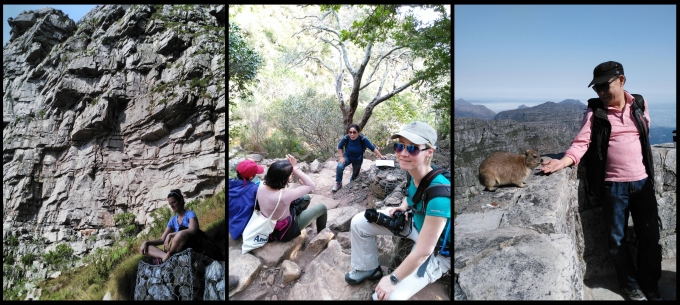 L: Finding Zen along Platteklip Gorge; C: Finding shade in the little Afromontane Forest; R: Finding a new friend (Rock Hyrax)
L: Finding Zen along Platteklip Gorge; C: Finding shade in the little Afromontane Forest; R: Finding a new friend (Rock Hyrax) Upon reaching the top, the groups proceeded to the topmost lithology on Table Mountain, the Pakhuis diamictite. These immature rocks outcrop as three distinct outliers and are easily characterised by the rounded outcrop pattern with no clear sedimentary features apparent. These rocks were deposited during the Upper Ordovician Glaciation and contain abundant faceted and striated quartz pebbles. Probable glacial-driven deformational features are also apparent and were closely examined by the groups.
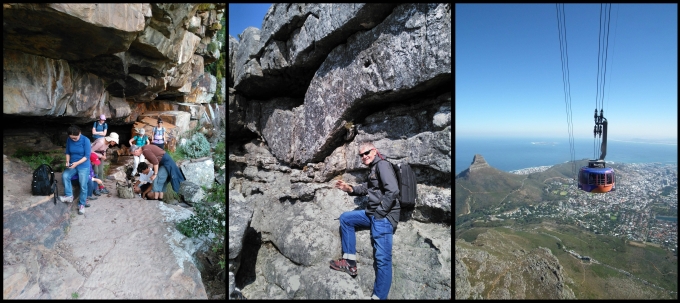 L: Investigating the Graafwater-Peninsula unconformity in the Silverstream Cave; C: Investigating deformational structures in the Pakhuis; R: Investigating the cable car descend
L: Investigating the Graafwater-Peninsula unconformity in the Silverstream Cave; C: Investigating deformational structures in the Pakhuis; R: Investigating the cable car descend The penultimate part of the journey was to visit Maclear’s Beacon, which is also the highest point on Table Mountain. This beacon comprises boulders of Peninsula and Pakhuis rocks and commemorates Sir Thomas Maclear’s Southern Hemisphere Arc of Meridian measurement conducted in 1844. This is an important landmark as this measurement assisted in disproving the common belief that the Earth was flat.
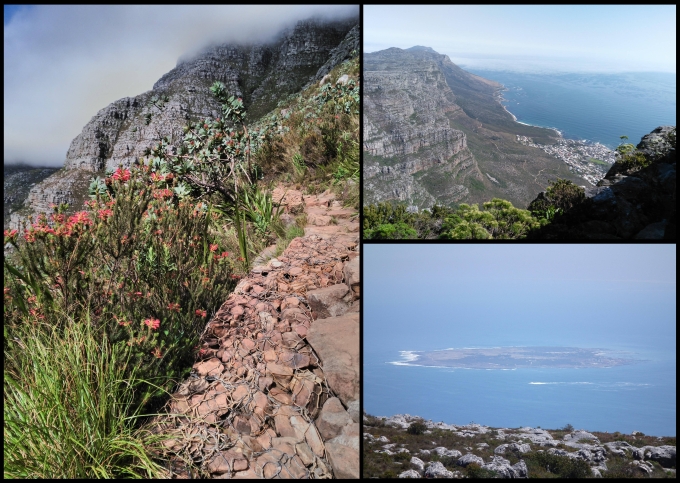 L: View along the Contour Path, just out of the Table Cloth; TR: View south along the Atlantic coastline; BR: View of Robben Island from the top of Table Mountain
L: View along the Contour Path, just out of the Table Cloth; TR: View south along the Atlantic coastline; BR: View of Robben Island from the top of Table Mountain We ended each journey with an easy walk to the Upper Cable Station along the Aquaduct Path with wonderful panoramic views across the Cape. After a delicious lunch at the Table Mountain restaurant we boarded the rotating Cable Car and enjoyed the scenic 2 minute descend. Here we must also save a thought for the participants of the final trip. Since the weather conditions were really bad with gale-force winds, the Cable Car could not operate and the restaurant was closed and the group had to hike down. This provided the participants with another opportunity of investigating the 550 m sequence of uninterrupted Peninsula quartzite!
All in all, the three trips were highly successful and each provided a unique experience. Cape Town and Table Mountain warmly (unless you’re in the “Table Cloth”) welcomes all future visitors!
Taufeeq Dhansay
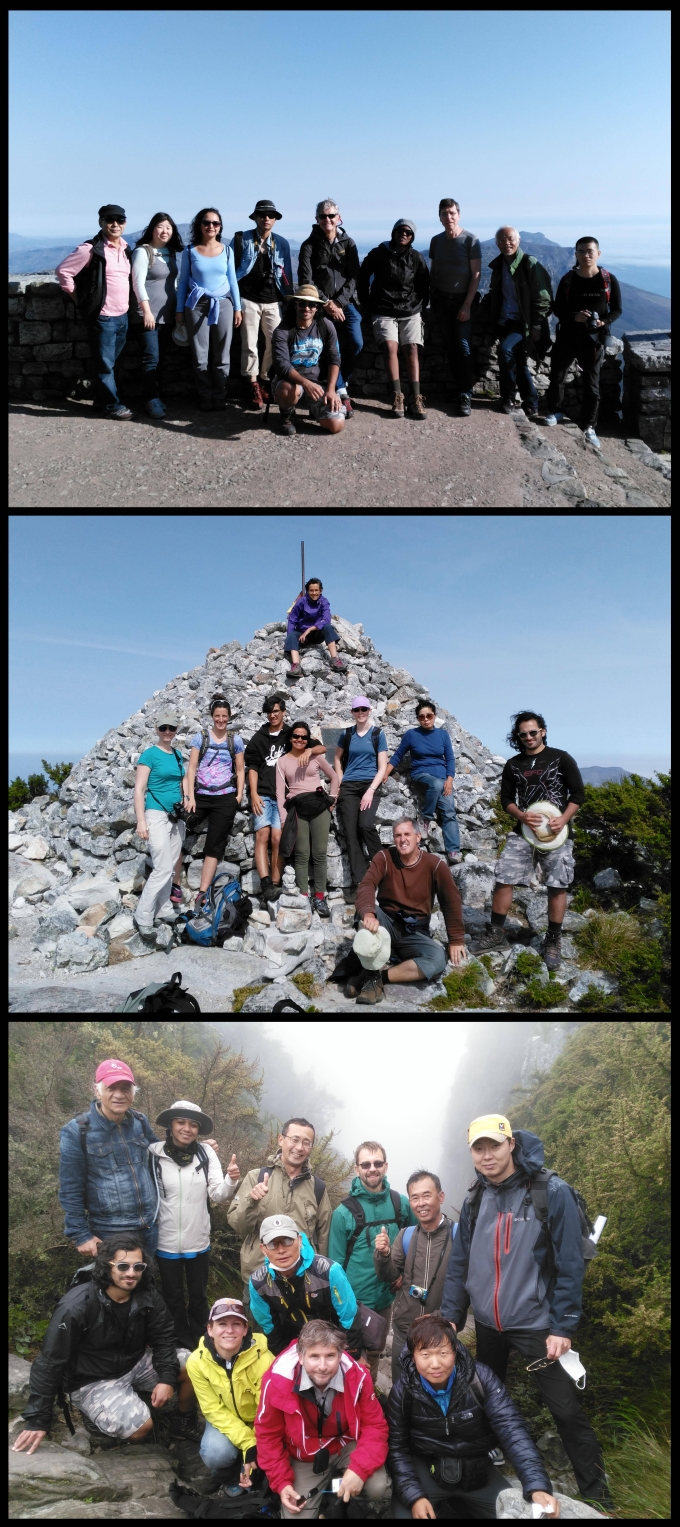 Team photos of the various IGC Table Mountain hikes (top – bottom): PRE9 – Upper Cable Station, PRE10 – Maclear’s Beacon and POST2 – top of Platteklip Gorge
Team photos of the various IGC Table Mountain hikes (top – bottom): PRE9 – Upper Cable Station, PRE10 – Maclear’s Beacon and POST2 – top of Platteklip Gorge  Field trips
Field trips  Sponsorship & expo
Sponsorship & expo  Registration
Registration Tours
Tours  Promotion
Promotion 

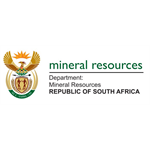












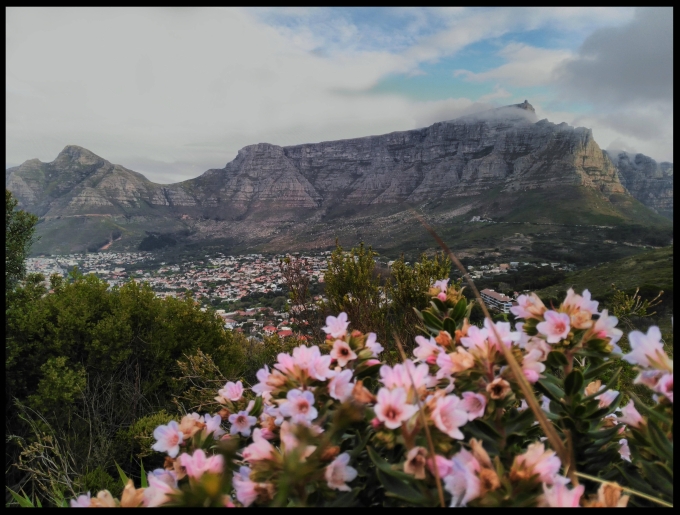
 Conference Programme
Conference Programme  Field trips
Field trips  Sponsorship & expo
Sponsorship & expo  Volunteer
Volunteer  GeoHost
GeoHost  Registration
Registration Tours
Tours  Promotion
Promotion  Publications
Publications


